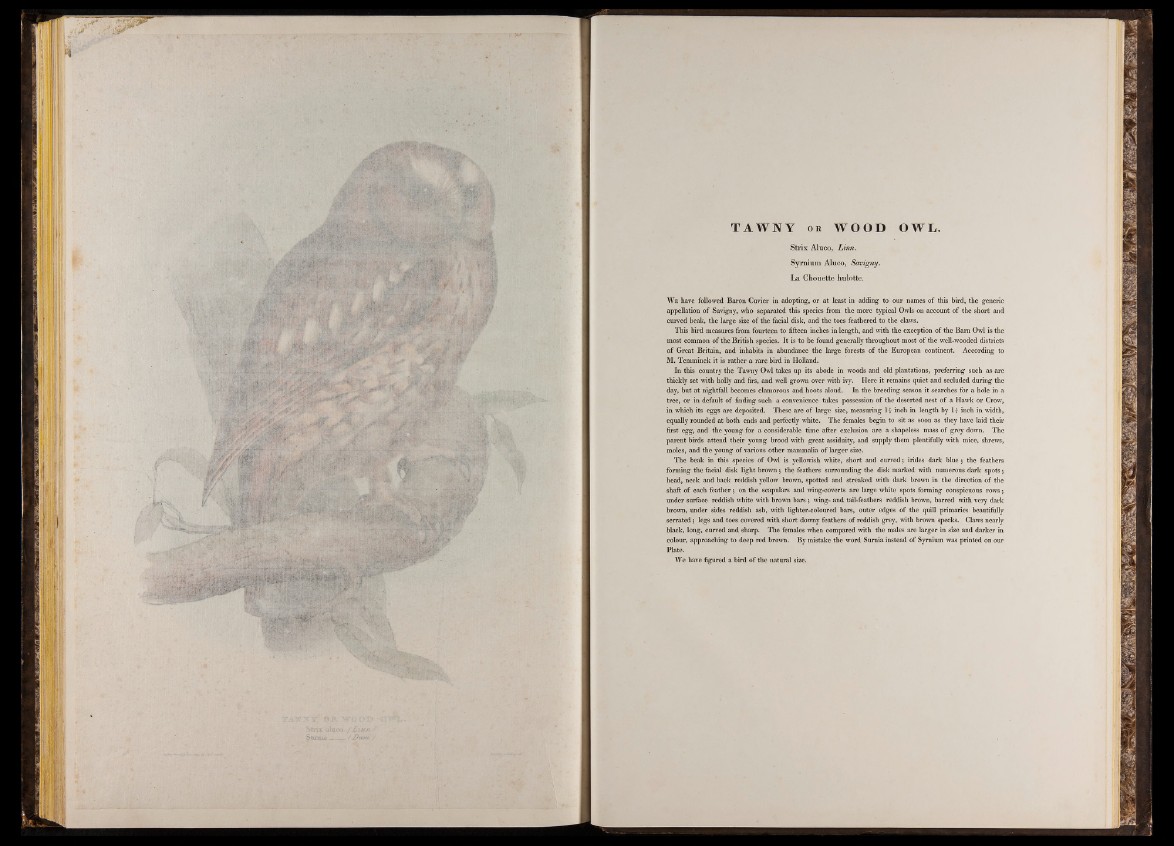
Bj| Pill!;'
i f
T AWN Y o r WOOD OWL,
Strix Aluco, Linn.
Syrnium Aluco, Savigny.
La Chouette hulotte.
W e have followed Baron Cuvier in adopting, or at least in adding to our names of this bird, the generic
appellation of Savigny, who separated this species from the more typical Owls on account of the short and
curved beak, the large size of the facial disk, and the toes feathered to the claws.
This bird measures from fourteen to fifteen inches in length, and with the exception of the Barn Owl is the
most common of the British species. It is to be found generally throughout most of the well-wooded districts
of Great Britain, and inhabits in abundance the large forests of the European continent. According to
M. Temminck it is rather a rare bird in Holland.
In this country the Tawny Owl takes up its abode in woods and old plantations, preferring such as are
thickly set with holly and firs, and well grown over with ivy. Here it remains quiet and secluded during the
day, but at nightfall becomes clamorous and hoots aloud. In the breeding season it searches for a hole in a
tree, or in default of finding such a convenience takes possession of the deserted nest of a Hawk or Crow,
in which its eggs are deposited. These are of large size, measuring 1-f- inch in length by inch in width,
equally rounded at both ends and perfectly white. The females begin to sit as soon as they have laid their
first egg, and the young for a considerable time after exclusion are a shapeless mass of grey down. The
parent birds attend their young brood with great assiduity, and supply them plentifully with mice, shrews,
moles, and the young of various other mammalia of larger size.
The beak in this species of Owl is yellowish white, short and curved; irides dark blue; the feathers
forming the facial disk light brown; the feathers surrounding the disk marked with numerous dark spots;
head, neck and back reddish yellow brown, spotted and streaked with dark brown in the direction of the
shaft of each feather; on the scapulars and wing-coverts are large white spots forming conspicuous rows;
under surface reddish white with brown bars ; wing- and tail-feathers reddish brown, barred with very dark
brown, under sides reddish ash, with lighter-coloured bars, outer edges of the quill primaries beautifully
serrated; legs and toes covered with short downy feathers of reddish grey, with brown specks. Claws nearly
black, long, curved and sharp. The females when compared with the males are larger in size and darker in
colour, approaching to deep red brown. By mistake the word Surnia instead of Syrnium was printed on our
Plate.
We have figured a bird of the natural size.